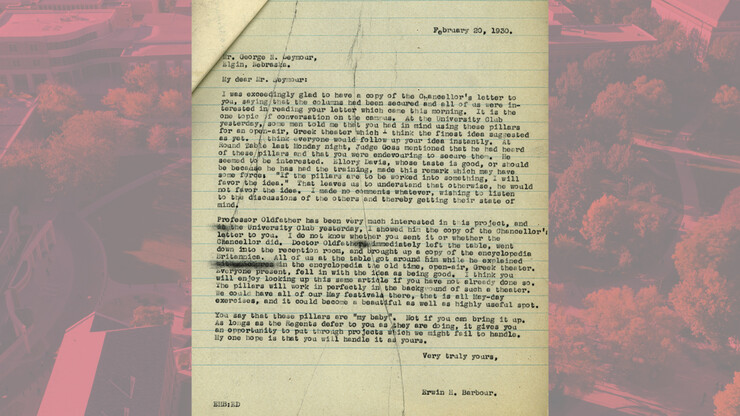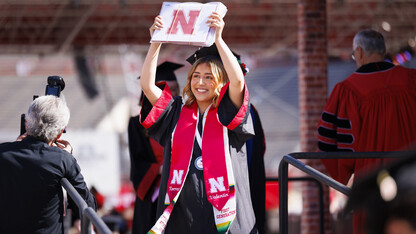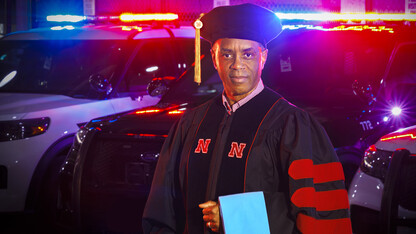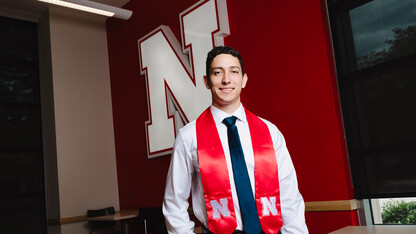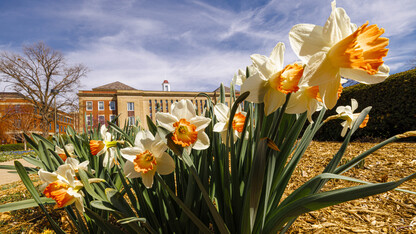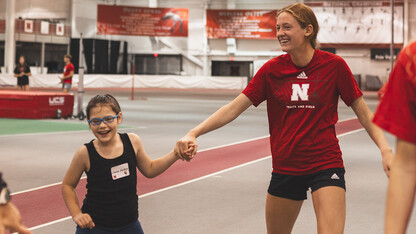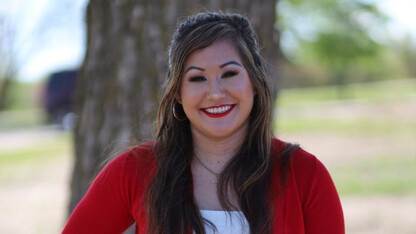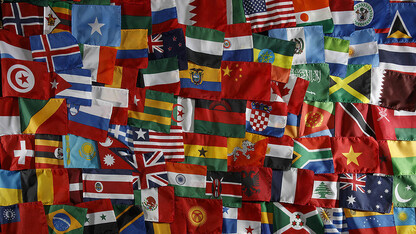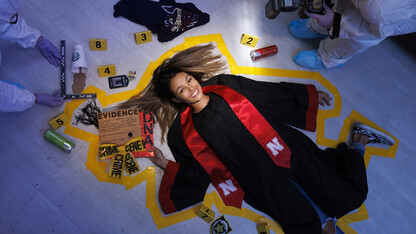· 5 min read
From the Archives: Historic columns
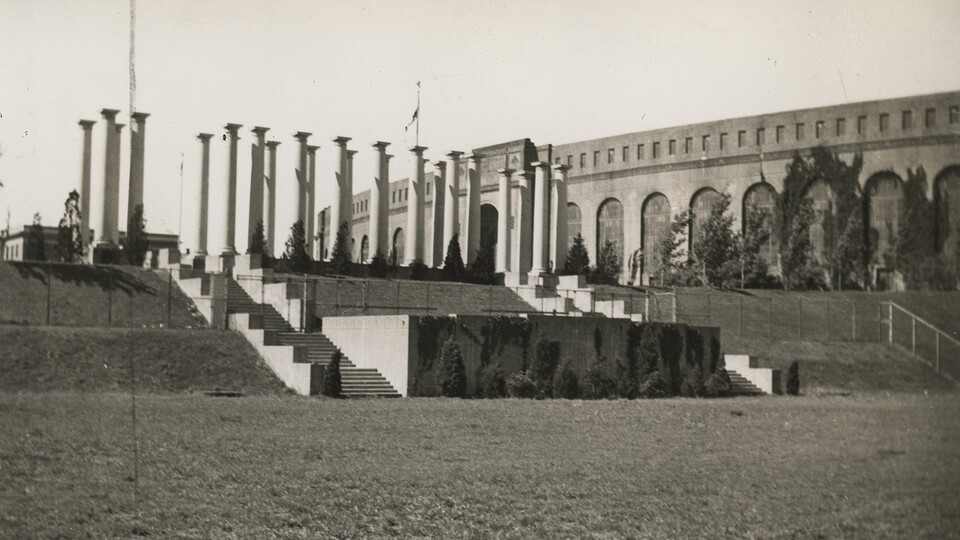
In the Sept. 28 State of Our University address, Chancellor Ronnie Green announced a new placement for iconic columns that previously stood at the northeast corner of Memorial Stadium.
Made of granite cut from a quarry in Colorado, the 28 columns originally stood at the front of Omaha’s Chicago, Burlington and Quincy Railway Station. The station, designed by Thomas Kimball and constructed in 1898 for the Trans-Mississippi and International Exposition, underwent an extensive renovation in 1929-30 and the columns were removed.
Two University of Nebraska administrators — George Seymour, a former regent with an interest in campus planning, and Erwin Barbour, then director of the NU State Museum — worked with the Burlington Railroad to have the columns donated to the university. Burlington officials agreed, paying to have each of the 28, 18,000-pound, 22-foot-tall columns shipped to campus.
The columns would remain idle in a lonely corner of campus from 1930 to 1935 as leaders developed and discarded various plans for the growing university. Possibilities included incorporating the columns into an open-air Greek theater or a colonnade. In 1938, the columns were erected along with seating built into the hillside overlooking a new athletic field at the north end of 12th Street.
In 1935, 24 of the columns were placed in the current colonnade in the northeast shadow of Memorial Stadium. The design featured seating that overlooked a new athletic field at the north end of 12th Street. The other four columns — all of which were damaged — would be trimmed, finished with new bases and capitals, and used in the Bob Devaney/Tom Osborne tribute that stands outside the southwest corner of the stadium.
Through the years, the columns have provided a backdrop for events and game days. Many Huskers have posed for photos, particularly around graduation, among them or danced between them.
The columns were removed and placed into storage in May 21 as construction began on the Go Big Athletics facility.
In the Sept. 28 address, Green announced that the columns will return to campus and be incorporated into a redesign of the 11th and R street entrance to campus. The project will be part of a major investment in the arts section of campus. Work will include a $75 million replacement of Westbrook Music Buildings, $25 million addition to the Lied Center for Performing Arts, and $15 million renovation of Kimball Recital Hall.
An initial concept drawing unveiled by Green showed how the columns could be used to connect the new Westbrook Music Building to Kimball Hall and the Lied Center’s Carson Theater.
Additional details about the columns’ return to campus will be announced.
In a letter held by the University Archives and Special Collections (above), Barbour wrote to Seymour outlining the campus buzz regarding possible plans for the columns when they were acquired. The text of the letter reads:
My dear Mr. Seymour:
I was exceedingly glad to have a copy of the Chancellor’s letter to you, saying that the columns had been secured and all of us were interested in reading your letter which came this morning. It is the one topic of conversation on the campus. At the University Club yesterday, some men told me that you had in mind using these pillars for an ope-air, Greek theater which I think the finest idea suggested as yet. I think everyone would follow up your idea instantly. At Round Table last Monday night, Judge Goss mentioned that he had heard of these pillars and that you were endevouring to secure them. He seemed to be interested. Ellory Davis, whose taste is good, or should be because he has had the training, made this remark which may have some force: “If the pillars are to be worked into something, I will favor the idea.” That leaves me to understand that otherwise, he would not favor the idea. I made no comments whatever, wishing to listen to the discussions of the others and thereby getting their state of mind.
Professor Oldfather has been very much interested in this project, and in the University Club yesterday, I showed him the copy of the Chancellor’s letter to you. I do not know whether you sent it or whether the Chancellor did. Doctor Oldfather then immediately left the table, went down into the reception room, and brought up a copy of the encyclopedia Brittannica. All of us at the table got around him while he explained with (illegible) in the encyclopedia the old time, open-air, Greek theater. Everyone present, fell in with the idea as being good. I think you will enjoy looking up this same article if you have not already done so. The pillars will work in perfectly in the background of such a theater. We could have all of our May festivals there, that is all May-day exercises, and it could become a beautiful as well as highly useful spot.
You say that these pillars are “my baby”. Not if you can bring it up. As long as the Regents defer to you as they are doing, it gives you an opportunity to put through projects which we might fail to handle. My one hope is that you will handle it as yours.
Very truly yours,
Erwin H. Barbour
*”From the Archives” is a weekly feature in Nebraska Today. Images are provided by Traci Robison, outreach archivist and assistant professor of practice with Archives and Special Collections in the University Libraries. Explore the Archives and Special Collections online. For more information, contact Troy Fedderson at tfedderson2@unl.edu or 402-472-8515.
